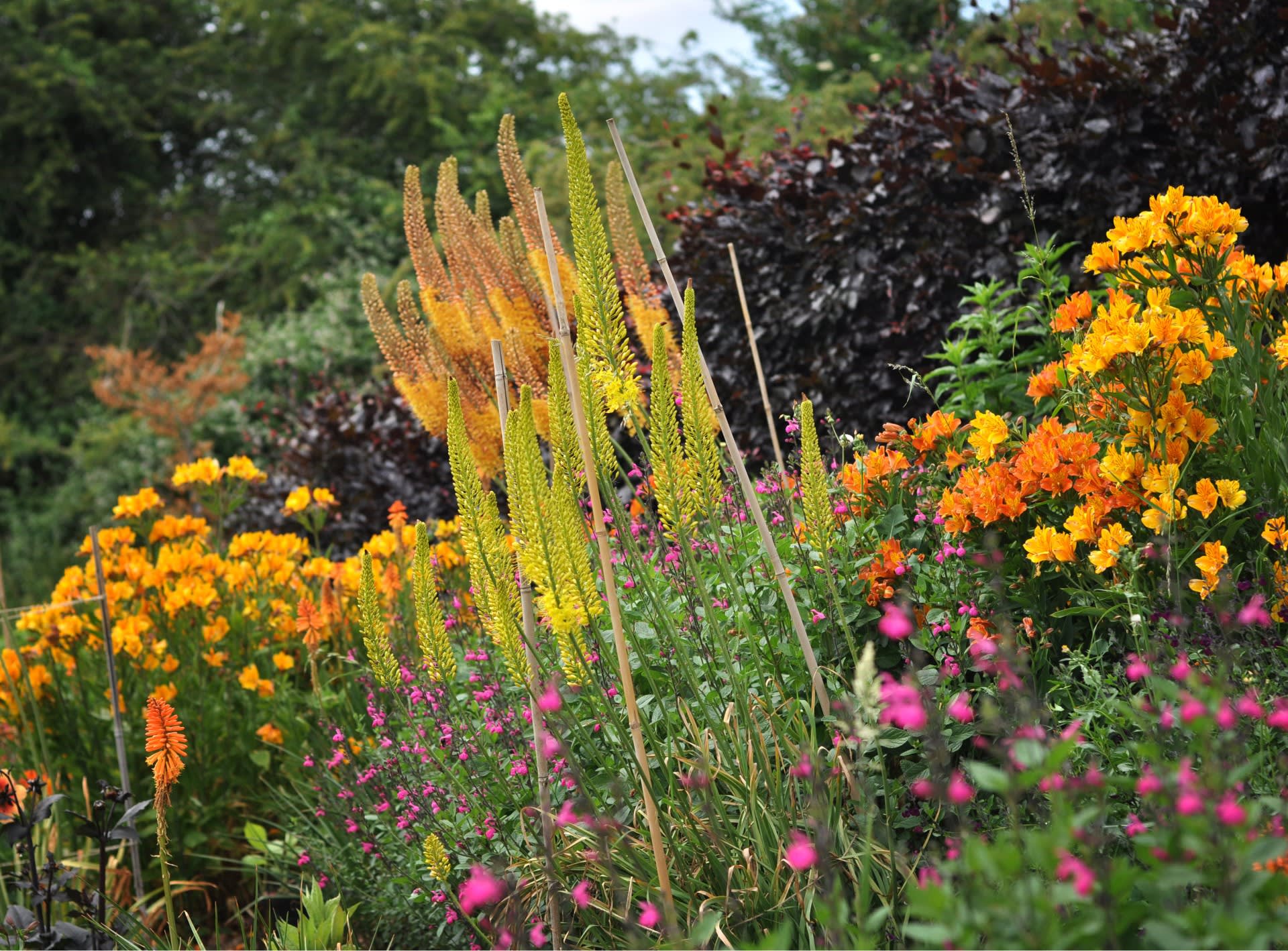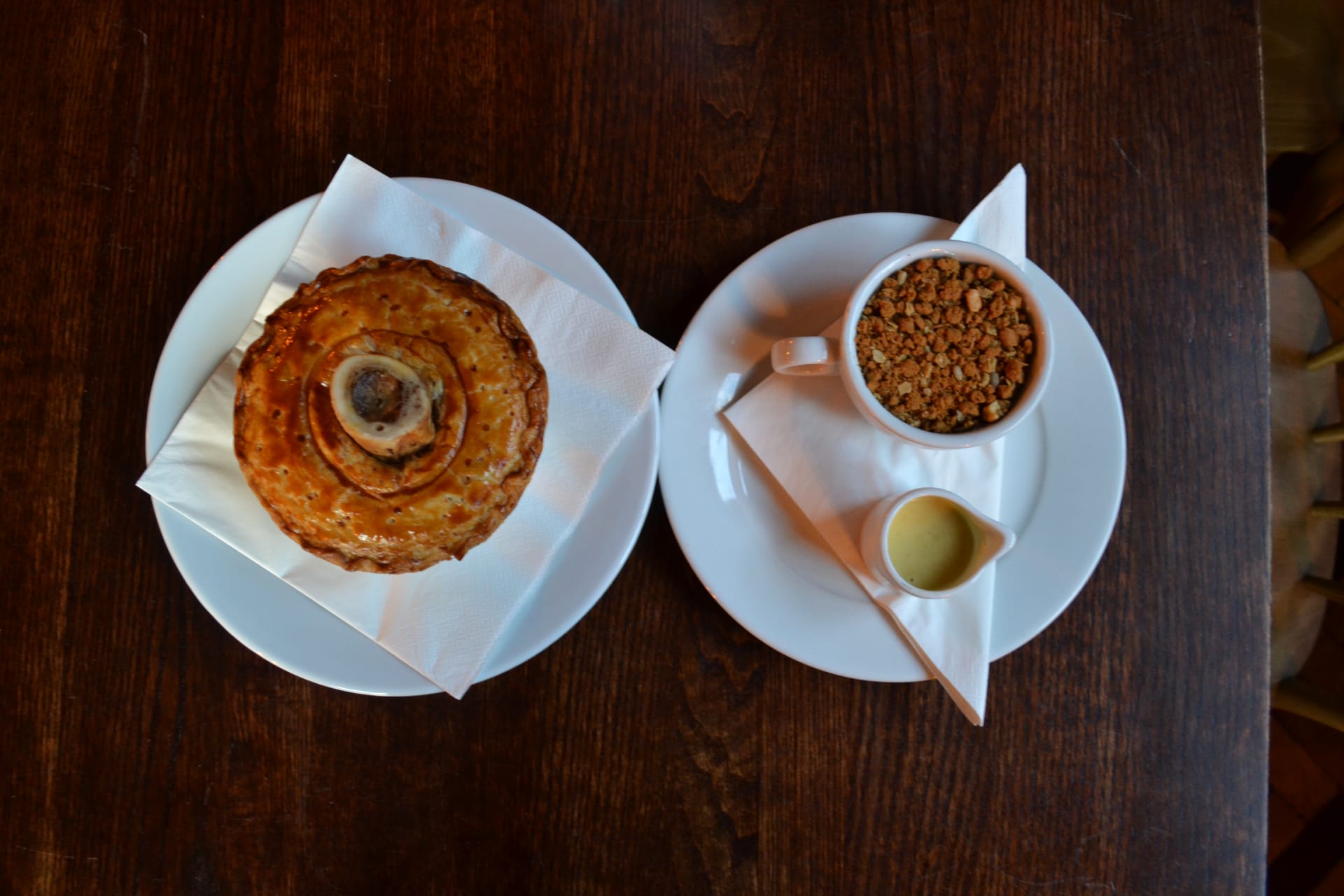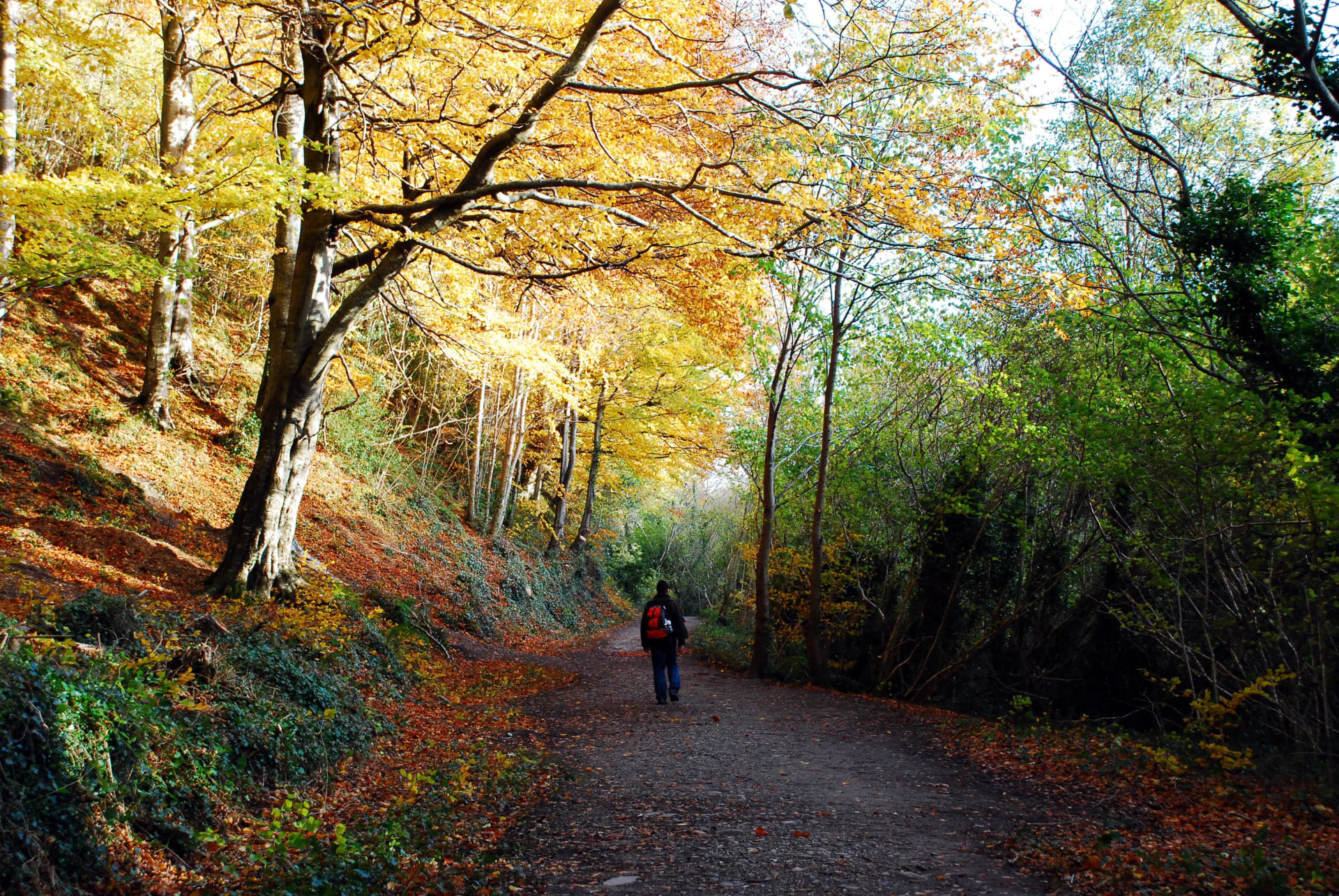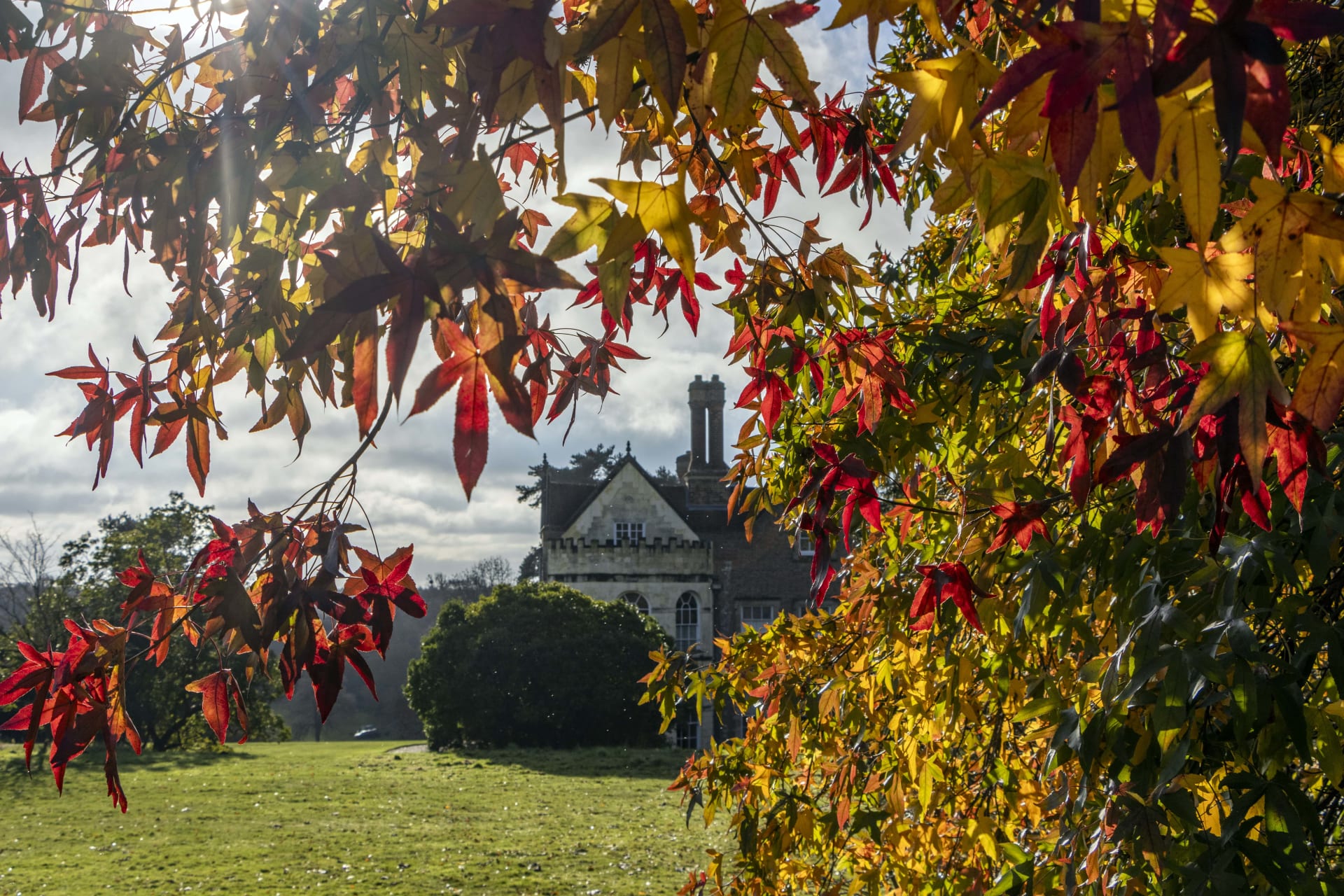A trip to Aston Pottery near Bampton should be on your to-do list this summer as the magnificent gardens for which Aston Pottery has become famous have undergone a dramatic replant and by late summer will be well worth a visit.
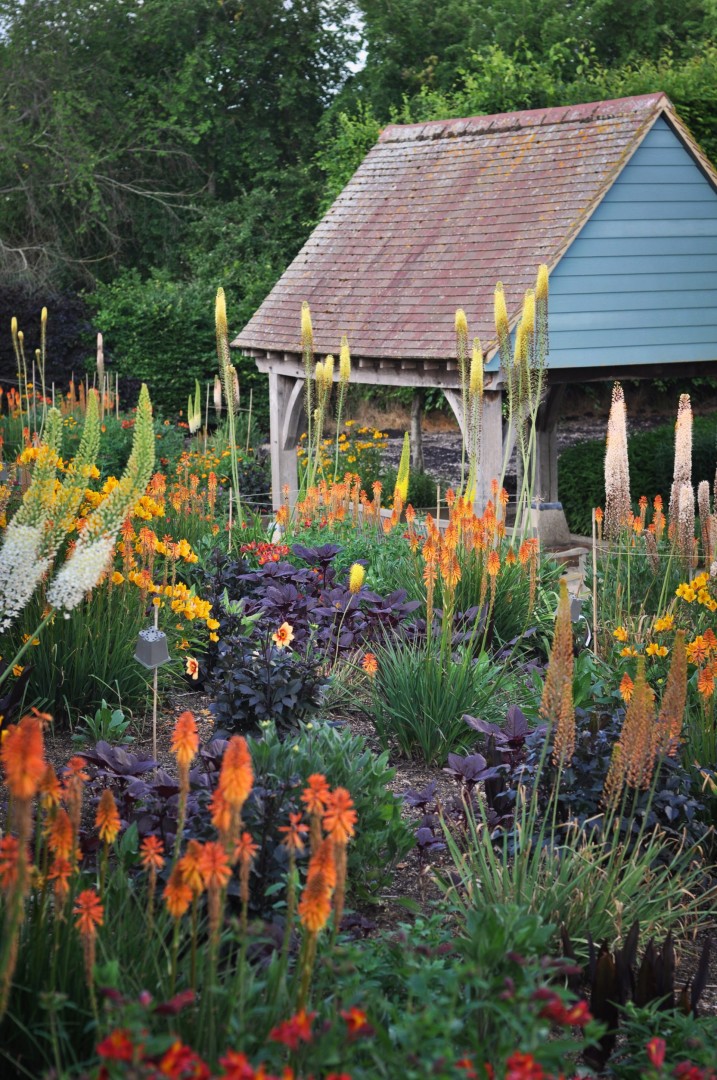 When owners of Aston Pottery, Jane and Stephen Baughan established their artisan pottery business back in 1996, they embarked on an ambitious renovation project of turning a collection of Victorian farm buildings into usable business premises. Renovating a Victorian milking and calving shed, originally built in 1836, they built their first shop where they sold their handcrafted artisan pottery. As they needed more space, using some 26,000 handmade bricks, the couple created a second shop and their café which sells a wide range of bread, cakes, quiches and other products all made on site.
When owners of Aston Pottery, Jane and Stephen Baughan established their artisan pottery business back in 1996, they embarked on an ambitious renovation project of turning a collection of Victorian farm buildings into usable business premises. Renovating a Victorian milking and calving shed, originally built in 1836, they built their first shop where they sold their handcrafted artisan pottery. As they needed more space, using some 26,000 handmade bricks, the couple created a second shop and their café which sells a wide range of bread, cakes, quiches and other products all made on site.
As Aston Pottery’s boundary is the road from Aston to Bampton, they wanted to make the site look attractive, to encourage passing traffic to come through their gates. In 2010 a start was made in creating the Great Perennial Border, which is six metres deep, running some 42 metres along the Cotswold stone boundary wall. Before work got underway, Stephen spent months planning how he would facilitate watering these new borders. As Kingsway Farm’s soil is heavy clay, he knew from the time spent helping his father as a small child on their half-acre vegetable plot, that in order to develop a successful garden, time and effort has to be put into preparing the soil. He used a digger initially to loosen the debris, nettles and brambles which had been left behind on the site, before incorporating in excess of forty tons of lime free Thatcham grit and a similar quantity of well-rotted recycled garden compost in his first Great Perennial Border. With the deep covering of grit and compost, a suitable planting layer was achieved which would be easier to hoe as the annual weeds appeared.
Stephen had a vision to create a traditional perennial border which would give a colourful display from late May until the frosts hit in mid to late November. He also wanted to take advantage of the fact he had space in which to plant, enabling large blocks of planting in layers to maximise impact. Planting over 2,500 plants of 50 different types of perennials close together, the aim was that as the plants grew, they would quickly cover the soil, helping to prevent weeds and loss of moisture from the overhead sun. Stephen’s approach is to use classic step-down layers with blocks of tall plants such as Inula racemose, Heliopsis, Heleniums and Solidago forming the back layer of block planting. The border was also home to Salvias, various Penstemons and Sedums along with Asters, Phlox and Eremurus. In order to create maximum impact, Stephen not only uses a mix of bold, bright flower colours combining a spectrum of yellow shades with bold pinks and purples, deep plum foliage and splashes of vibrant blue and purple, he also selects the plants for the texture of their foliage and growth habit. By taking this approach, his planting schemes hold interest long before the colour explodes. Bees and hoverflies are naturally drawn to the plants and as the border develops over the summer, visitors can soak in the stunning and artistic effect of his horticultural tapestry.
As the plants in the Great Border grew, during the summer of 2022, the Solidago (golden rod) seeded everywhere, taking over the border. The Heliopsis also did not like the hot, dry conditions and Stephen realised it was time to replan the border. He wanted to recycle many of the plants so began the task of identifying what he wanted to split and re-plant. The Asters and Phlox were amongst those that were ringed off with canes, numbered, photographed and written description made, all ready for replanting in the spring. Once he knew what plants he had available, he put his revised planting plan together. Some of the new plants he grew from seed, such as Angelica gigas which grows to at least 1.5m with erect purple stems bearing large umbels of deep purple flowers in late summer and early autumn. He also added Aster novi-belgii ‘Winston Churchill,’ a carmine-red-pink semi-double flower which will pack a punch in late summer. Again, plants have been put into large blocks providing maximum impact.
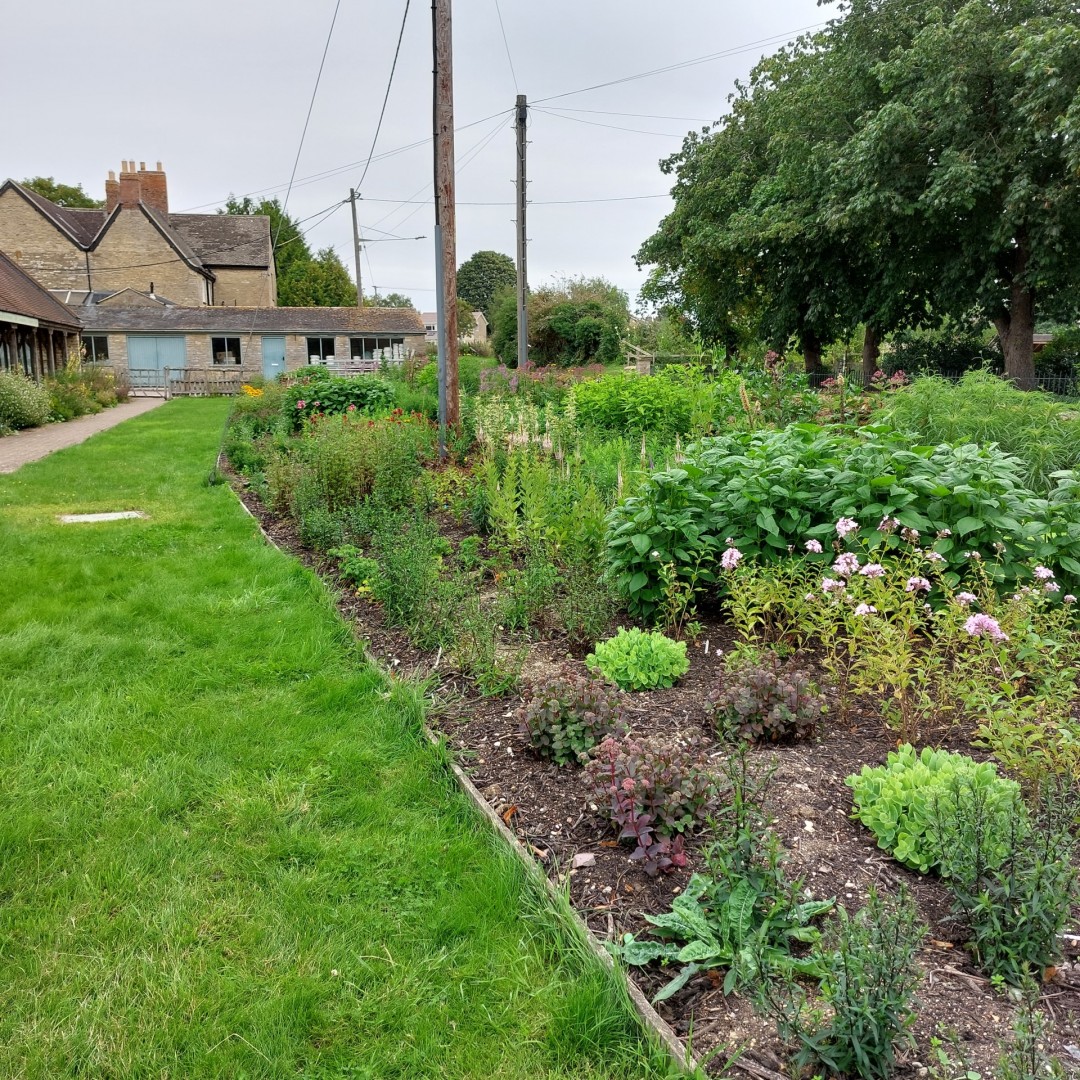 Over the years, as he is a true gardener, Stephen has gone on to develop other areas of the former farmyard into exciting borders that are breathtakingly beautiful from spring to late autumn. The spoil from the foundations of the second shop and café was used to create a bank at the back of the carpark. Here he planted a purple hornbeam hedge, not only to function as a windbreak, but also to provide a dramatic backdrop to the Hot Bank garden he could visualise. With over 50 different varieties of plants, combining deep maroon foliage, with hot colour and shocking pink and purple flowers, he developed a space which is truly awe-inspiring. As the wind catches the tall fox-tail lilies which sway amongst the swathes of brightly coloured Astrantia, Kniphofia and Dahlia ‘Sunshine,’ you are energised by the spectacle before you. Unfortunately, the collection of Penstemons which were planted in the Hot Bank garden were badly hit by the cold winter frost of 2022 and many did not survive.
Over the years, as he is a true gardener, Stephen has gone on to develop other areas of the former farmyard into exciting borders that are breathtakingly beautiful from spring to late autumn. The spoil from the foundations of the second shop and café was used to create a bank at the back of the carpark. Here he planted a purple hornbeam hedge, not only to function as a windbreak, but also to provide a dramatic backdrop to the Hot Bank garden he could visualise. With over 50 different varieties of plants, combining deep maroon foliage, with hot colour and shocking pink and purple flowers, he developed a space which is truly awe-inspiring. As the wind catches the tall fox-tail lilies which sway amongst the swathes of brightly coloured Astrantia, Kniphofia and Dahlia ‘Sunshine,’ you are energised by the spectacle before you. Unfortunately, the collection of Penstemons which were planted in the Hot Bank garden were badly hit by the cold winter frost of 2022 and many did not survive.
The central Hornbeam Walk, the first area you see as you enter the main driveway, was Stephen’s project for 2011. Sixty pleached Hornbeam trees were planted either side of a 72m long border on either side of the walkway. The Jubilee borders were planted with a fabulous array of grasses and perennials in shade of fresh blues, purples, pinks, reds and the occasional yellow. One of Stephen’s particular favourite plants is the Chilean tupa, reaching up to 2.5m tall with dramatic, downy foliage and blood red, tubular flowers. This is planted next to Veronicastrum ‘Fascination’ which with its light violet-blue flowers makes a delightful planting combination.
Each winter and early spring, Stephen and his three helpers, sow on average of 8,500 seeds in a small polytunnel, planting some 6,500 out into the gardens. The Annual Border takes three people four days to plant during the second week of June. Some 5,500 plants are planted in five layers of height in triangular blocks of colour. This year’s border uses several varieties of sunflowers to give height at the back, in front of which are planted different varieties of Rananculus, Cosmos, Cleomes, Tagetes and Zinnias. Within weeks of planting, this border soon fills out and by the height of summer, will be a profusion of colour.

